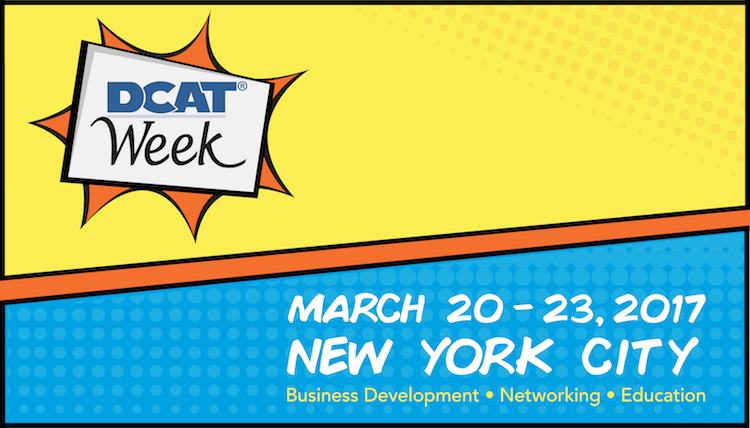DCAT Week ’17: Next Generation Formulation and Drug Delivery Technologies
Pharmaceutical companies, CDMOs, CMOs, and excipient producers need to continually evaluate their strategies, technologies, and capabilities in formulation development, drug delivery, and drug-product manufacturing. How does your company’s toolbox measure up? The DCAT Week ’17 Education Program, Market Opportunities: Advanced Formulation and Next-Generation Drug Delivery Technologies, provides perspectives from leading pharma companies and industry experts on what will be required in the near- and long-term.
Market overview
So where are the market opportunities for pharmaceutical companies and contract development and manufacturing organizations (CDMOs), contract manufacturing organizations (CMOs), and excipient manufacturers supporting formulation development, drug delivery development, and drug-drug product manufacturing? Josef Bossart, PhD, Executive Editor, PharmaCircle LLC, will examine the most significant business, product and technology trends of 2016 and what is on the horizon for 2017 and beyond. Using a trends analysis covering a 10-year history of drug delivery and formulation approvals, this presentation will provide an in-depth market overview of pipeline developments and commercial activities by dosage form and highlight the key partnerships driving formulation development, drug development, and commercialization.
Next-generation drug deliver technologies
How will drug delivery evolve and what capabilities will be required of CDMOs, CMOs, and ingredient suppliers? What technologies are of importance to pharmaceutical companies, and how do they make that assessment and allocate resources? The DCAT Week ’17 Education Program, Market Opportunities: Advanced Formulation and Next-Generation Drug Delivery Technologies, provides answers to these questions. Keith Horspool, PhD, Vice President of Material and Analytical Sciences, Boehringer-Ingelheim, and Ronald L. Smith, PhD, Scientific Associate Vice President, Pharmaceutical Sciences, Merck Research Laboratories, will provide strategic considerations used in evaluating advanced formulation and drug-delivery technologies, including whether to build internal capabilities or use external partners.
How can conventional formulation and drug delivery be transformed to allow for more accurate dosing and potentially greater patient compliance? The program will examine an emerging category of new drugs, digital medicines, and how smart pills may factor into the strategies of pharmaceutical companies in the future in a presentation by Jeremy Frank, Vice President, Digital Medicine Platform Development, Proteus Digital Health.
Finding cost-effective and innovative approaches in delivering drugs to improve patient compliance and health outcomes is an ongoing challenge, but it is particularly so for drugs targeted for the developing world, where drugs need to be stable for longer periods with limited cold chain, be easily adoptable by users with limited training and equipment, and convenient enough to promote patient adherence. Susan Hershenson, PhD, Deputy Director, Chemistry, Manufacturing and Controls, Bill & Melinda Gates Foundation, will discuss the advances in small-molecule drug delivery that the Bill & Melinda Gates Foundation is making to overcome these issues by engaging a broad set of partners, including academics, start-ups, and multinational pharmaceutical companies, and the key learnings that can be applied across the business of drug development.
The 505 (b)(2) Regulatory Pathway: Market Opportunitie
The 505 (b)(2) pathway is a regulatory route for a new drug application that potentially enables a lower cost, lower risk, and faster path to regulatory approval and market. It may be used to create a new dosage form, alternate route of administration, or new mechanism of drug delivery. In a co-presentation, Kenneth V. Phelps, President and CEO, Camargo Pharmaceutical Services, and Gemma Casadevall, PhD, Chief Scientific Officer, Medichem, S.A, will explain the key elements of 505 (b)(2) development requirements, including CMC (chemistry, manufacturing and control) requirements, and the typical interactions required between CDMOs/CMOs and sponsor companies, including the experience of one pharmaceutical company using this pathway leveraging external partners.
Information about Market Opportunities: Advanced Formulation and Next-Generation Drug Delivery Technologies, including how to register, may be found here.







